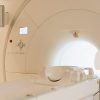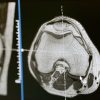$0.00
Adapting to the Challenge: The Need for Increased RF Power in MRI Machines for Heavier Patients
Magnetic Resonance Imaging (MRI) is a remarkable medical imaging technology that allows healthcare professionals to obtain detailed images of the body’s internal structures without the use of ionizing radiation. While MRI is highly versatile and effective, it does present unique challenges when it comes to accommodating patients of different sizes and body compositions. In particular, heavier patients often require the use of increased Radiofrequency (RF) power during scanning to achieve accurate and clear images. In this article, we explore the reasons behind this need and how it impacts MRI technology.
Understanding the Role of RF Power in MRI:
RF power is a fundamental component of MRI technology. It plays a crucial role in stimulating the magnetic nuclei within the patient’s body, which, in turn, emit signals that are used to create images. The amount of RF power used in an MRI scan can be adjusted to meet the specific requirements of each patient.
The Challenge with Heavier Patients:
Heavier patients present unique challenges when it comes to MRI scanning due to their larger body mass and greater tissue density. Here’s why increased RF power is often necessary:
1. Signal Attenuation: The RF power used in MRI scans is absorbed and attenuated by the patient’s body tissues. In heavier patients, there is more tissue for the RF power to penetrate before it can stimulate the magnetic nuclei effectively. As a result, the RF power must be increased to ensure that sufficient signal is generated for image acquisition.
2. Signal-to-Noise Ratio: The signal-to-noise ratio (SNR) is a critical factor in MRI image quality. Heavier patients can experience lower SNR due to the increased distance the RF power has to travel, leading to decreased image quality. Using higher RF power can improve the SNR and, subsequently, the image quality.
3. Homogeneity of the Magnetic Field: Achieving a uniform magnetic field is essential for high-quality MRI images. In larger and heavier patients, variations in the magnetic field can occur, resulting in image artifacts. Increasing the RF power can help mitigate these variations and enhance image consistency.
Balancing Patient Comfort and Image Quality:
While it’s crucial to use increased RF power for heavier patients to ensure accurate and clear images, it’s equally important to strike a balance. The challenge is to provide higher RF power without compromising patient comfort or safety. Radiologists and technologists are trained to make these adjustments to accommodate each patient’s unique needs.
The Role of MRI Manufacturers:
MRI manufacturers continue to innovate and develop technologies that address the challenges posed by larger and heavier patients. Newer MRI machines often come equipped with advanced imaging techniques and software that can optimize RF power and enhance image quality, making the process more efficient and comfortable for patients.
In Conclusion:
MRI technology is continually evolving to meet the demands of patients with varying sizes and body compositions. The need for increased RF power when scanning heavier patients is a crucial consideration for healthcare providers seeking to provide high-quality diagnostics and patient care. By understanding the challenges and adjusting RF power as needed, the medical community can ensure that MRI remains a versatile and effective imaging tool for all patients.
Recent Posts
Recent Comments
Join our newsletter
Get our emails for info on new items, sales and much more.
Register now to get latest updates on the newest parts!











